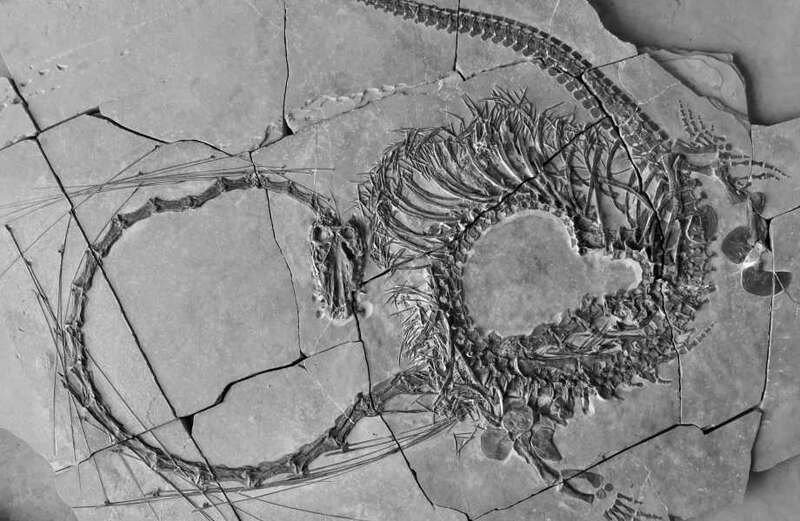PALEONTOLOGISTS have uncovered a "remarkably" well preserved "dragon" fossil in China that dates back to 240-million-years ago.
The complete fossil - a rarity considering it's size - is of a 16ft (5m) long aquatic reptile from the Triassic period in Guizhou.



It's long neck and tail is what has earned it the nickname of "dragon", although it's real name is Dinocephalosaurus orientalis.
The Dinocephalosaurus orientalis was first identified in 2003, but scientists haven't been able to study the animals' full anatomy until now, according to new research, published by Earth and Environmental Science Transactions of The Royal Society of Edinburgh.
Among all of the extraordinary finds we have made in the Triassic of Guizhou province, Dinocephalosaurus probably stands out as the most remarkable.
Disgusted shoppers slam supermarket after spotting turkey two weeks out of date Professor Li Chun, Institute of Vertebrate Paleontology and Paleoanthropology
Dr Nick Fraser, from National Museums Scotland, who was part of the international team that studied the fossil, said this was the first time scientists had been able to see it in full.
"This discovery allows us to see this remarkable long-necked animal in full for the very first time," he said.
“It is yet one more example of the weird and wonderful world of the Triassic that continues to baffle palaeontologists.
“We are certain that it will capture imaginations across the globe due to its striking appearance, reminiscent of the long and snake-like mythical Chinese dragon.”
Speaking separately to the BBC, Dr Fraser described the beast as "a very strange animal".
"This discovery just adds to the weirdness of the Triassic," he added.
"And every time we look in these deposits, we find something new."
Despite superficial similarities, Dinocephalosaurus was not closely related to the Plesiosaurs that evolved some 40million years later - the species that is thought to have inspired the Loch Ness monster mystery.
The discovery is a result of international efforts paying off - alongside the findings of additional specimens since 2003.
Researchers from Scotland, Germany, America and China spent a decade studying Dinocephalosaurus orientalis at the Institute of Vertebrate Paleontology and Paleoanthropology in Beijing, part of the Chinese Academy of Sciences.
 Stormy gales wash walrus and seals ashore as urgent warnings for SNOW issued
Stormy gales wash walrus and seals ashore as urgent warnings for SNOW issued
"This was an international effort. Working with colleagues from the United States, the United Kingdom and Europe, we used newly discovered specimens housed at the Chinese Academy of Sciences to build on our existing knowledge of this animal," Professor Li Chun of the institute said.
"Among all of the extraordinary finds we have made in the Triassic of Guizhou province, Dinocephalosaurus probably stands out as the most remarkable."



































